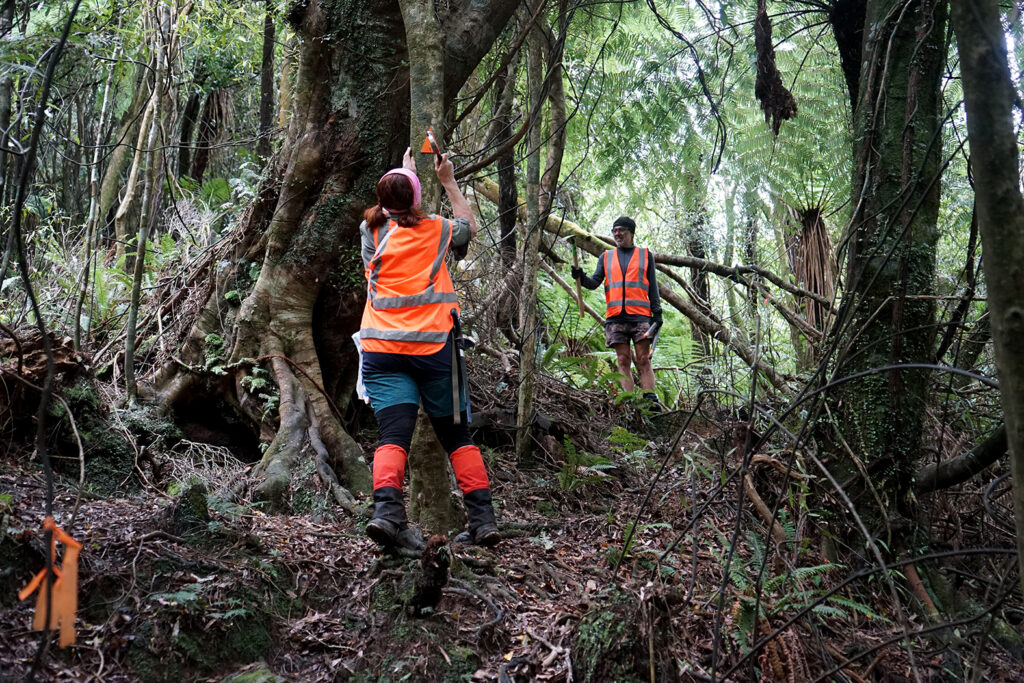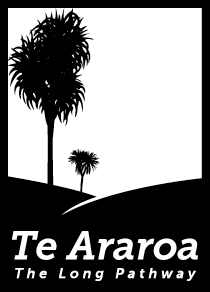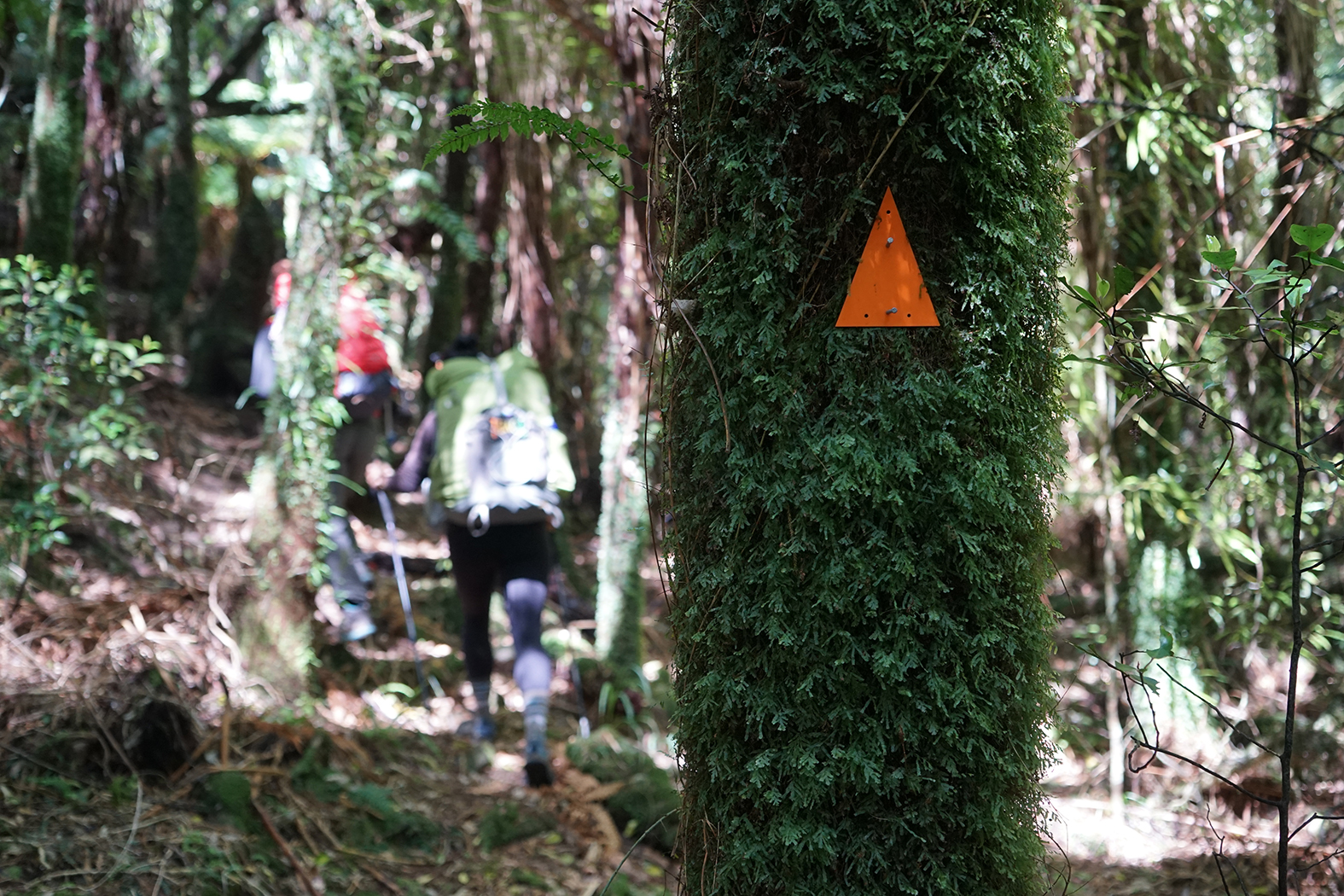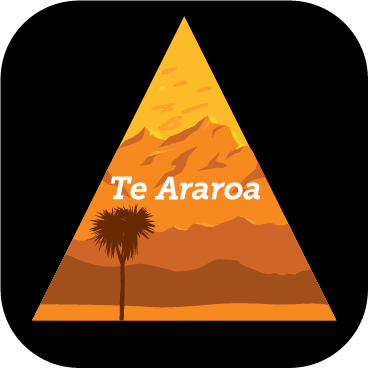Track markers help identify the path you need to follow. However, there are a few tricks and tips you need to be aware of.
The Department of Conservation uses orange triangles to mark track direction. If you haven’t seen one for a while, take a moment to consider why. Sometimes they are spaced further apart, and tracks that have been rerouted around slips or windfall may not be marked. Sometimes the marker drops off, or the tree it is on falls over. But losing sight of the orange markers also means you may have inadvertently strayed off the path.
You’re off track, now what?
If you haven’t seen a marker for a while, look around. Is there an obvious track? Check the map. What other clues do you have? Are you still beside the river you are following?
If you are confident you are on the track, carry on looking for markers and other clues to confirm this. If you’re not confident, retrace your steps to the last marker. Look around as you go, you may spot the point at which you left the track. If not, once back at your last marker try again following the track, taking great care noting your surroundings and the map. Never be afraid to turn back if you are not confident you have the skills to follow a track with sparse markers.

Markers should make it easy
If a track crosses a river or stream, or follows the bed of a river or stream for a period, the point of exit is usually marked by an extra-large orange marker. When the track passes through a clearing, a large orange marker may be used to show where the track re-enters the bush. Keep a lookout for this, sometimes it can become hidden by vegetation.
Seeing orange track markers gives you confidence that you are on a track, but are you on the track you’re meant to be on? Many people have found themselves on the wrong track and continued following that until they got into difficulty.
Markers are just one clue to help ensure you are going the right way, but they don’t replace a map and other location clues.
Multi-coloured markers
Markers of other colours such as pink, blue and yellow are used for pest control and many people have become lost by following the wrong coloured marker. Tracks maintained by other authorities, such as regional councils, may use a variety of colours and types of markers.
Coloured tape is used regularly by hunters or pest controllers – they may be used to improve track marking when there are gaps, especially to mark a new track around a slip or along poorly formed sections of track. You may come across a range of other markers. Some historical markers you may find include pieces of Venetian blind or jam jar lids.
Heather Grady is an instructor with Outdoor Training New Zealand
This article first appeared in Wilderness Magazine in February, 2022


